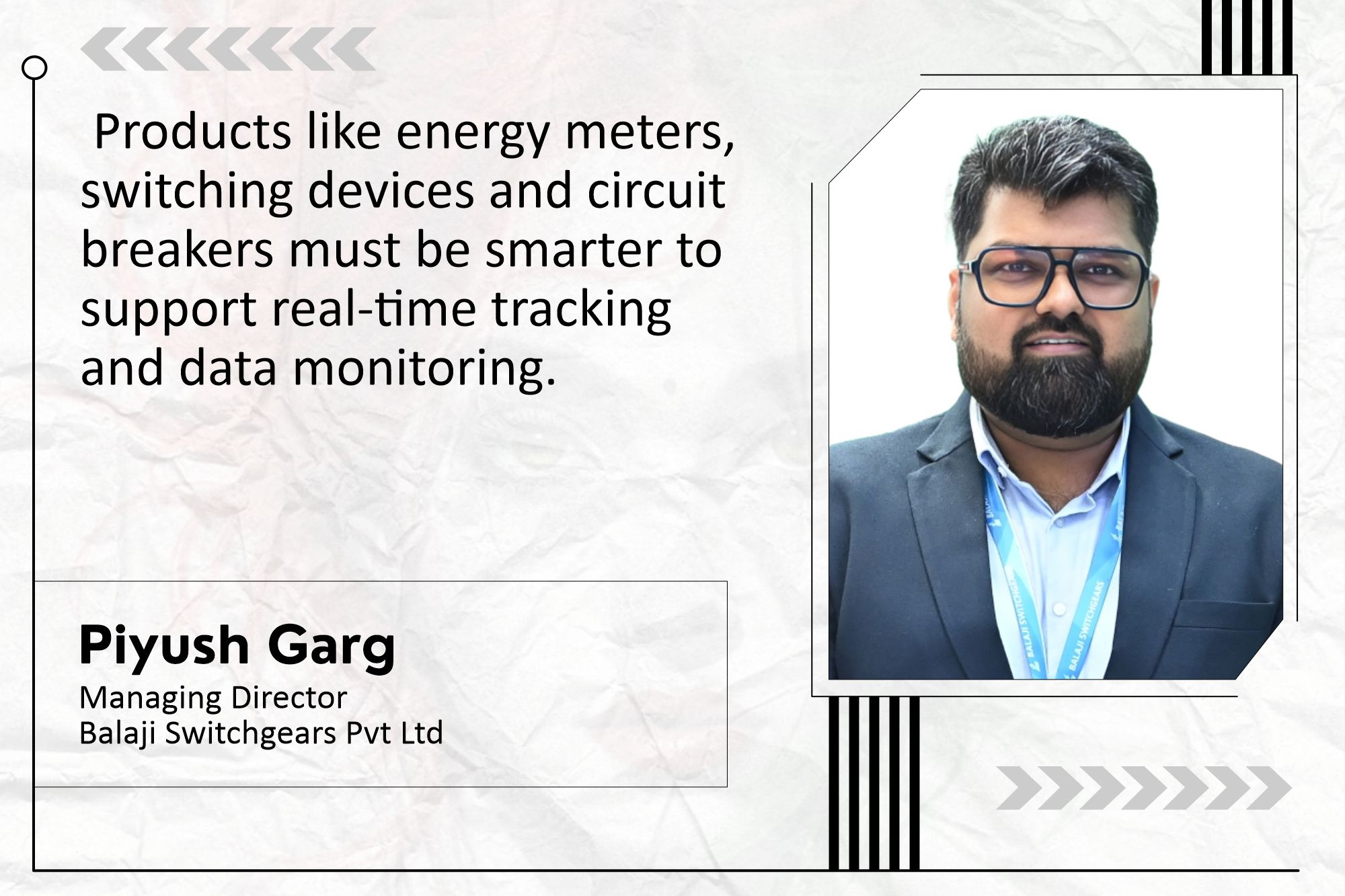PLI Scheme powers ₹12.5 lakh crore boost, spurs jobs and cuts imports in key sectors
By EPR Magazine Editorial March 25, 2025 4:06 pm IST
By EPR Magazine Editorial March 25, 2025 4:06 pm IST

Policies like custom duty hikes on imports, subsidies for component manufacturing, and the ‘Atmanirbhar Bharat’ initiative encourage self-reliance for Indian manufacturers.
India’s energy sector is experiencing rapid evolution. This evolution is driven by renewable energy expansion, advanced electrical equipment demand, and grid modernisation. Government initiatives like the PLI scheme foster domestic manufacturing, innovation, and sustainability. Piyush Garg from Balaji shares more insights.
How are manufacturers innovating advanced electrical equipment to meet the demands of renewable energy integration?
There are two big reasons for the surge in demand for advanced electrical equipment: incentive schemes being launched to support RE power generation initiatives and the growing demand for smart and energy-efficient infrastructure in urban and rural developments. Alongside, the government is working on grid modernisation that demands advanced electricals to be RE grid compatible for a smoother transition. In this aspect, manufacturers must innovate and work on R&D to make their products more efficient. Products like energy meters, switching devices, and circuit breakers must be smarter to support real-time tracking and data monitoring. Utilities invest in digital substations, AI-driven power management, and IoT-enabled monitoring systems to enhance grid resilience. Governments and industries are also adopting microgrids and hybrid power systems, further accelerating the demand for intelligent switchgear and protection devices.
How has India’s PLI scheme impacted local manufacturers and reduced import dependency?
India’s PLI scheme has remarkably impacted local manufacturers in our industry. As of August 2024, investment of ₹1.46 lakh crore was made in multiple sectors, which has resulted in incremental production/sales of over ₹12.50 lakh crore with employment generation of over 9.5 lakhs and exports surpassing ₹4 lakh crores with significant contributions from sectors such as electrical-electronics, pharmaceuticals, and food processing. There has been a significant reduction in dependency on imported goods, strengthening our supply chain. Policies like custom duty hikes on imports, subsidies for component manufacturing, and the ‘Atmanirbhar Bharat’ initiative encourage self-reliance for Indian manufacturers. To further expand, the same government is also promoting increased manufacturing of semiconductors, transformers and R&D of power electronics in India.
What challenges does India face in achieving its 500 GW renewable energy goal, and how can policy support address them?While it is a huge opportunity for the industry in terms of business and expansion, India’s goal of integrating 500 GW of non-fossil fuel energy by 2030 also presents significant challenges. RE is irregular and requires advanced switchgear, smart transformers, and digital substations to manage fluctuations and ensure grid resilience. Secondly, the dependency on imported power electronics, semiconductors, and transformers has slowed the progress. The PLI scheme is helpful and opportunistic, but India’s manufacturing capacity still needs further scaling. Adopting IoT, AI, and predictive maintenance is critical, but cybersecurity threats and data management complexities need attention. To operate the same, we will also require a much more equipped workforce that invites the scope of training and skill development. So, such tools will demand more qualified youth to meet the job requirements. Integrating large-scale battery storage and pumped hydro is essential for balancing the supply, but high costs and limited domestic production remain challenging. These challenges must be addressed on the ground, requiring policy support, R&D investment and stronger public-private partnerships.
How do large-scale energy storage projects and AI-enabled smart grids enhance India’s grid stability and energy management?
With the rise in energy storage projects and grid-scale battery deployments, the energy sector in India is evolving to enhance efficient energy management and grid stability. Large-scale lithium-ion, sodium-ion, and flow batteries are being deployed to store excess renewable energy and supply it during peak demand times like summers to help improve grid reliability. Many solar-wind hybrid projects with integrated storage are helping manage irregularity and ensure a stable power supply. AI and IoT-enabled smart grids optimise battery dispatch, reducing transmission losses and enabling real-time demand response. The National Energy Storage Mission (NESM) and PLI schemes foster domestic battery manufacturing and reduce reliance on imports. As India scales up storage, cost reductions, technology innovations and regulatory support will be the key drivers in the near future.
We use cookies to personalize your experience. By continuing to visit this website you agree to our Terms & Conditions, Privacy Policy and Cookie Policy.